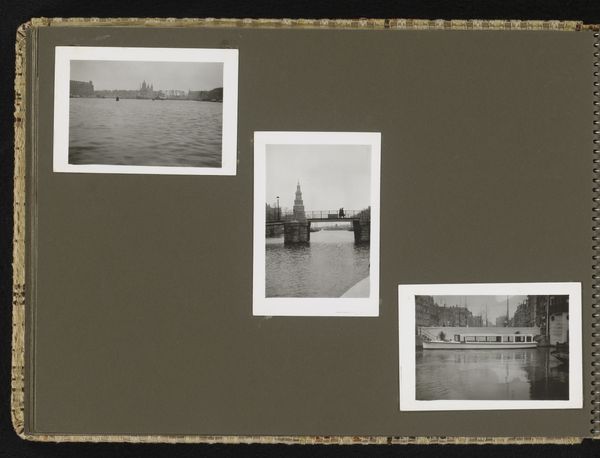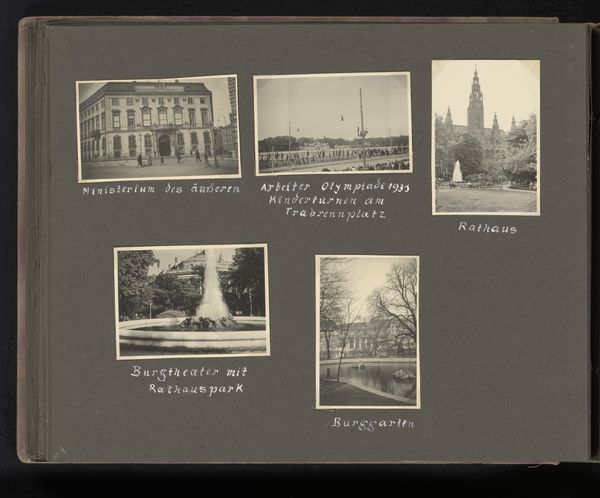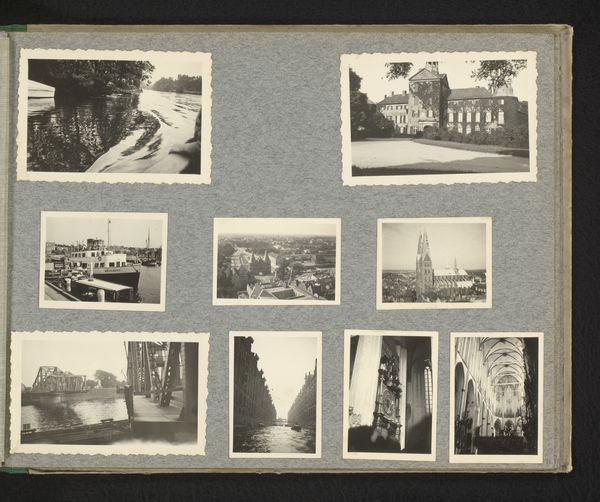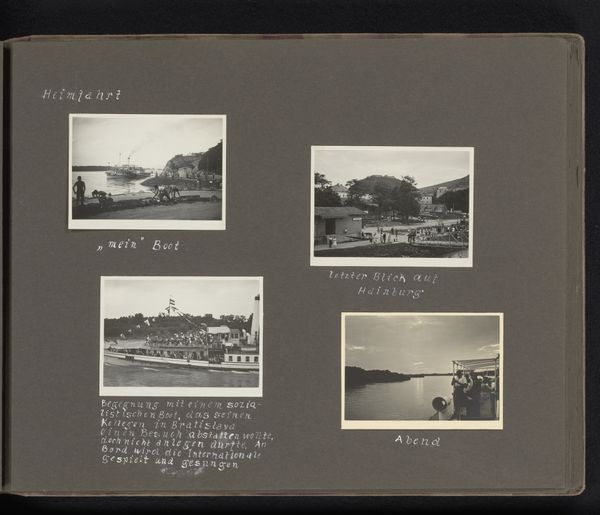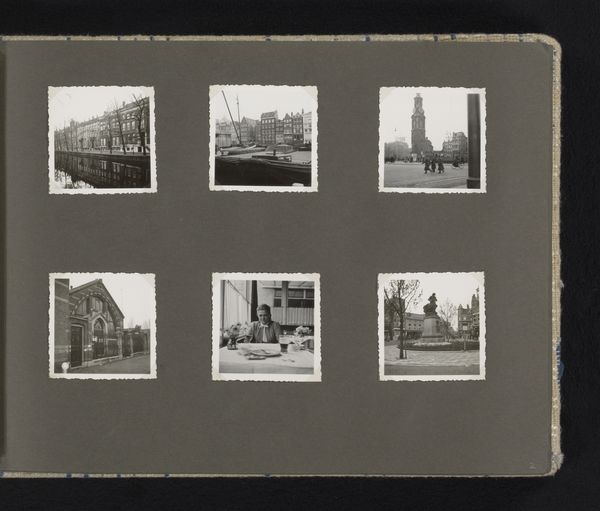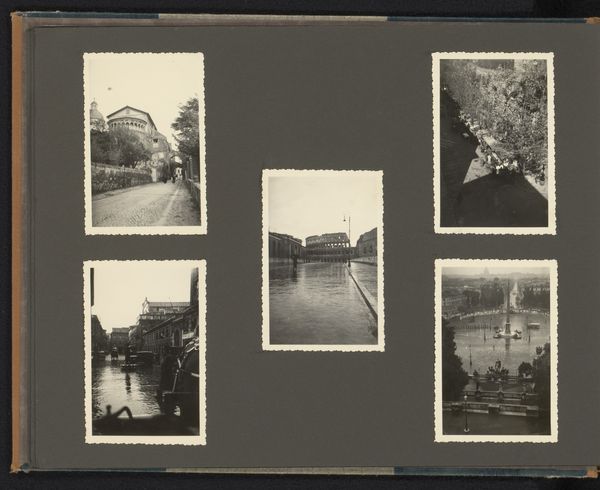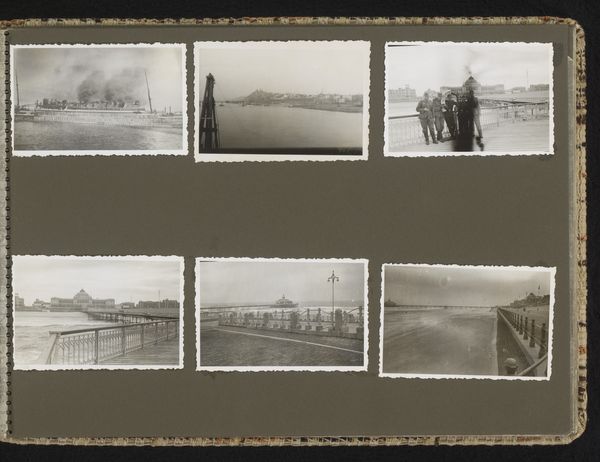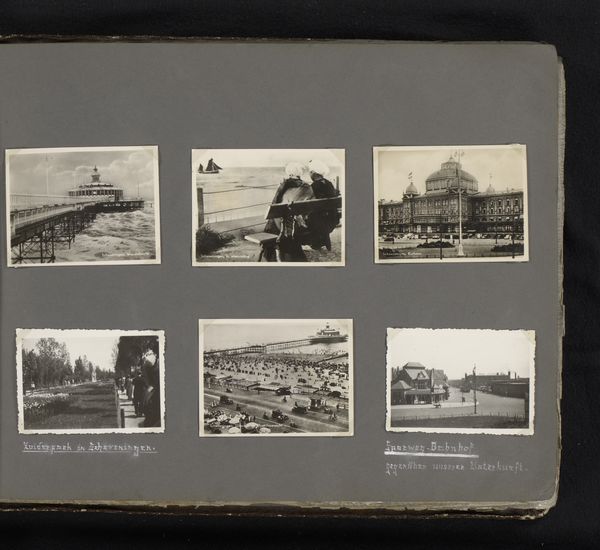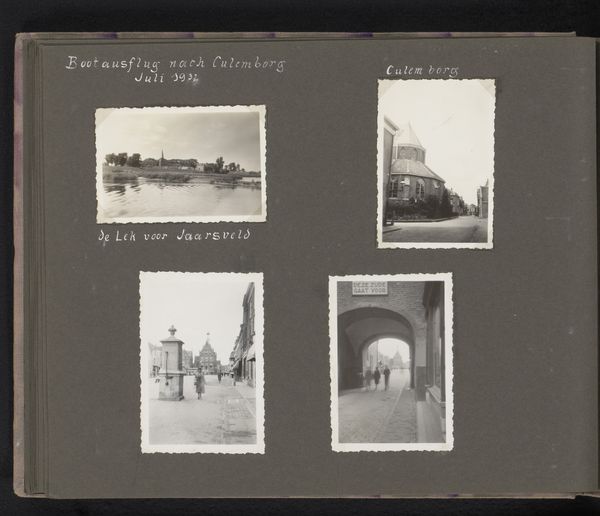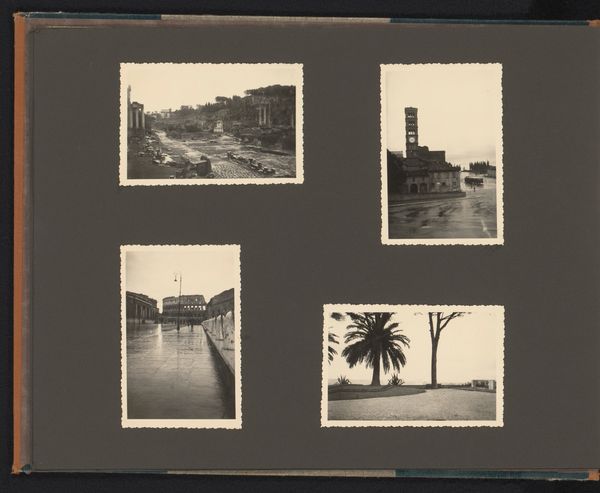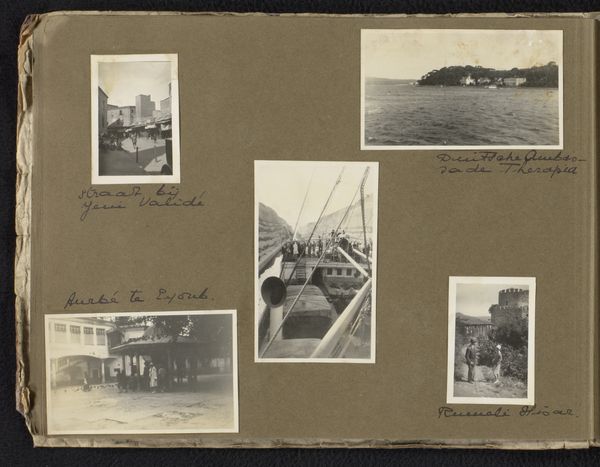
print, photography
# print
#
landscape
#
photography
#
cityscape
#
modernism
Dimensions: height 70 mm, width 92 mm, height 200 mm, width 280 mm
Copyright: Rijks Museum: Open Domain
Curator: Looking at this evocative print, “Bezoek aan de Wereldtentoonstelling te Antwerpen, oktober 1930,” dating from perhaps 1930, it seems to be comprised of photos that form a sort of album page, likely part of a personal collection capturing the architectural marvels and staged displays of the Antwerp World's Fair. What’s your immediate reaction to it? Editor: The high-contrast monochrome and structured photo arrangements evoke a peculiar blend of nostalgia and detachment. They are reminiscent of viewing scenes from a faded memory or perhaps observing the visual remnants of colonialism and modernity at a distance. What can you share with me on the symbolism? Curator: Each photograph presents compelling imagery: one labeled "Neger dorp" or "Negro Village," one showcasing “Eeuwfeest plaats”, and the final “De Engelsche Afdeeling,” all hint at specific, themed exhibitions or pavilions. Consider how these spaces acted as symbols themselves. The ‘Negro Village,’ undoubtedly the most contentious image here, invites an interrogation of colonial power dynamics exhibited on an international stage, for instance. The others promote progress. Editor: Indeed, framing a “Negro Village” alongside spaces celebrating centennials or English influence underscores how colonial narratives were strategically woven into broader displays of modernization and national prestige. In today’s context, such curation within world exhibitions begs questions about representation, exploitation, and the cultural gaze. Curator: Quite. Think of how this era—influenced heavily by burgeoning modernism—idealized progress through industrial might, architectural grandeur, and colonial ventures. The fair itself embodied these ideals, projecting an image of civilization carefully managed and categorized. But looking closer, the contrast suggests undercurrents of inequality. Editor: Exactly. A surface-level celebration masked systemic injustices. This photograph functions as a time capsule preserving not just physical structures but, more critically, ideological constructs. By studying it, we uncover complex layers within interwar Belgian history regarding empire, national identity, and societal perceptions. Curator: I believe your activist perspective sheds significant light on viewing this piece. Seeing it now has a renewed depth; I am curious to research more of these exhibits now. Editor: It is through grappling with these complicated histories embedded within visual materials that we keep necessary conversations alive.
Comments
No comments
Be the first to comment and join the conversation on the ultimate creative platform.
